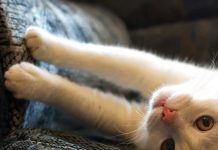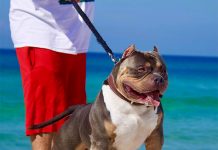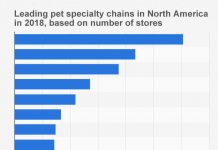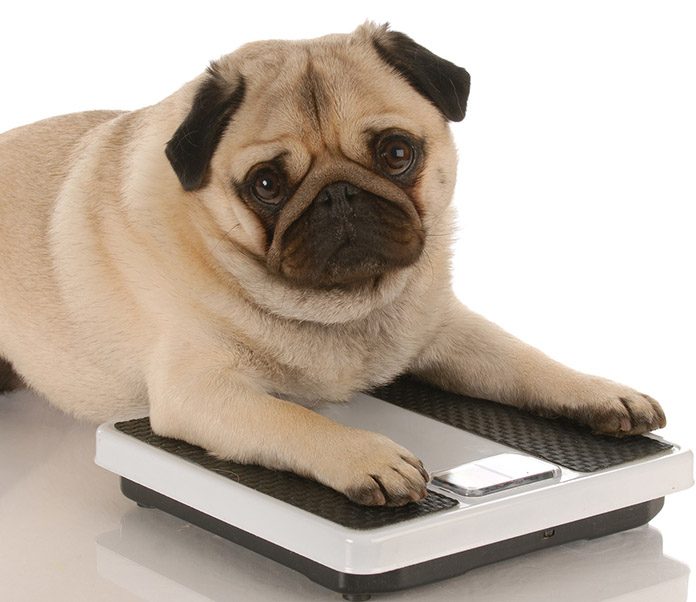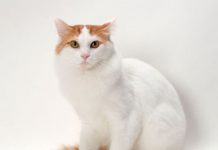![]()
Body Condition
Do you know your pet’s body condition? How can you tell if your cat or dog is underweight, overweight or at their ideal weight? Wrapped in a fur coat, it can be challenging to determine your pet’s body condition. That’s why twice-annual visits to your local veterinarian are so important. Your pet’s doctor can help assess your cat or dog’s body condition during an exam. They might also assign them a body condition score of 1-5 to help you better understand their weight.
Here are the five different body condition scores for cats and dogs, and what they mean:
- Very thin: Severely defined ribs and waist (>20% under ideal body weight)
- Thin: Easily visible ribs and waist (about 10-20% under ideal body weight)
- Ideal weight: Ribs easily felt, but not seen – defined waist
- Overweight: Ribs not easily seen or felt (10% above ideal body weight)
- Obese: Waist is absent (>20% above ideal body weight)
Obesity in Dogs and Cats
There are many factors that contribute to pet obesity, including activity level, breed, age and nutrition. Just like people, our pets’ metabolism slows as they age, making it easier to pack on the pounds as they get older.
Lack of Exercise
To stay healthy and fit, dogs and cats need regular exercise. For dogs, this might look like two to three walks each day, plus a game of fetch or keep away. Cats, on the other hand, must get physical activity from play – about 30 minutes each day.
When our pets are sedentary, their body isn’t using all the calories they consume. When this happens, extra calories are stored and converted into fat, which can make simple activities more difficult, like climbing stairs or fetching a toy. Our cats and dogs feel their best when they are strong and limber, so keeping a good exercise routine will help prevent weight gain and help them develop healthy muscles.
Medical Conditions
Some medical conditions, such as arthritis, can make exercise difficult or uncomfortable. Hip dysplasia in dogs can also make walks or play a painful experience. While medications can help manage their symptoms, it’s important to talk with your veterinarian about pain management and if extra weight is making their symptoms worse. A healthy weight management plan can often help alleviate pain from sore joints.
Overfeeding
Even if your cat or dog gets plenty of exercise, consuming too many calories can lead to weight gain. To ensure your pet is getting the proper amount of food, be sure to review the feeding guidelines on the back of the package. It’s important to note that the guidelines are just that, guidelines. If you’re unsure about how much food your cat or dog needs, or if you think they need to lose a few pounds, talk with your veterinarian. He or she can recommend the right food portions for your pet for healthy weight maintenance or to help them achieve their ideal body weight.
Frequent treating also falls under overfeeding. While it’s important to reward our furry companions for good behavior, too many treats can cause weight gain. Giving your cat or dog a couple treats a day (about 10% of their daily caloric intake) in addition to a complete and balanced diet is healthy; however, if you plan to feed more treats, decrease their meal portion size to account for the extra calories. You can also try non-food treats, such as belly rubs or toys.
Tip: Dogs or cats should never eat table scraps. Human foods have more calories than pet food and treats, and even a few pieces can exceed their daily caloric needs.
Nutrition Quality
Your pet’s dietary needs vary depending on several factors, including their age, breed, size, activity level and medical conditions. Their dietary needs also change as they grow older. For example, an active six-month-old kitten has different nutritional needs than a senior indoor house cat. Your veterinarian is a great resource for finding the best dog or cat food for your furry friend. They can recommend a dry or wet food formula that’s specially designed for your pet’s dietary needs.
Breed and Genetics
Did you know that some cat and dog breeds are more prone to obesity than others? Due to genetic factors, dog breeds including Labrador Retriever, Cairn Terrier and Cocker Spaniel, and cat breeds including Manx, Maine Coon and Russian Blue, tend to pack on the pounds more easily than their canine and feline counterparts. While doctors aren’t exactly sure why this is, studies suggest that certain genes influence how our pets’ brains recognize hunger and feeling full after a meal.
Health Risks of Obesity
Obesity in pets can lead to serious illness and even shorten their life span. There’s a strong correlation between extra weight and chronic medical conditions in cats and dogs, including orthopedic disease (e.g., arthritis and hip dysplasia) and respiratory diseases. The best way to avoid health issues associated with obesity is to promote a healthy weight in dogs and cats from an early age. Instill healthy habits, such as regular exercise and meal and treating plans as early as possible. Work with your veterinarian throughout the life of your pet to find the right balance of physical activity and nutrition to help them maintain an ideal body condition.
Medical care for chronic conditions can also be very expensive. In fact, on average, cat owners spend 36% more on diagnostic procedures for overweight cats, and dog owners spend about 17% more on health care and 25% more on medications. The biggest cost of all is the impact obesity has on the life of cats and dogs. Helping our cats and dogs maintain a healthy weight can help ensure they experience a good quality of life, as well as help us potentially save money at the vet.
Promoting a healthy weight in dogs and cats is one of the best ways to show our pets just how much we love them. By prioritizing their health today with healthy habits, including regular exercise and good nutrition, we can positively affect their health for years to come.
| Picture | Name | Price | Description |
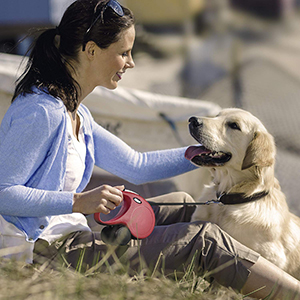 |
Flexi Classic Cord Leash, Small Cord, 16-Feet – Blue | $13.75 | More |
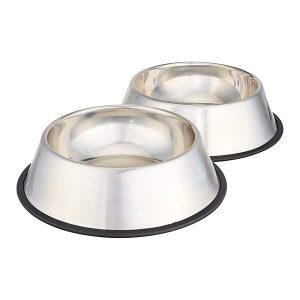 |
AmazonBasics Stainless Steel Dog Bowl | More | |
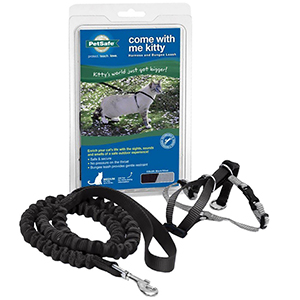 |
PetSafe Come with Me Kitty Harness and Bungee Leash, Harness for Cats | More | |
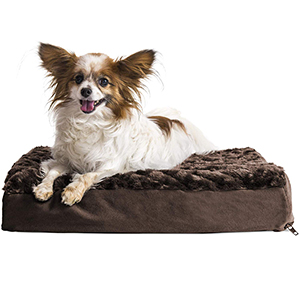 |
Furhaven Pet Dog Bed | $19.99 | More |
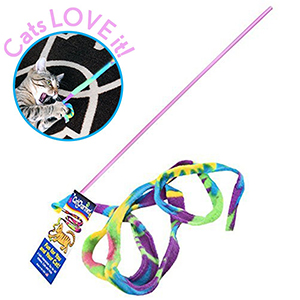 |
CAT DANCER Cat Toy | $6.90 | More |
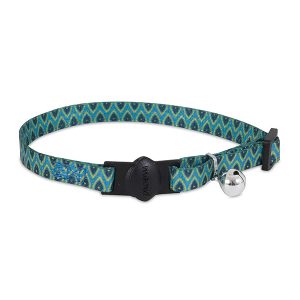 |
Aspen Pet Breakaway Fashion Collar | $3.99 | More |
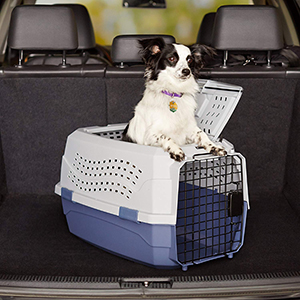 |
AmazonBasics Two-Door Top-Load Pet Kennel | $30.99 | More |
